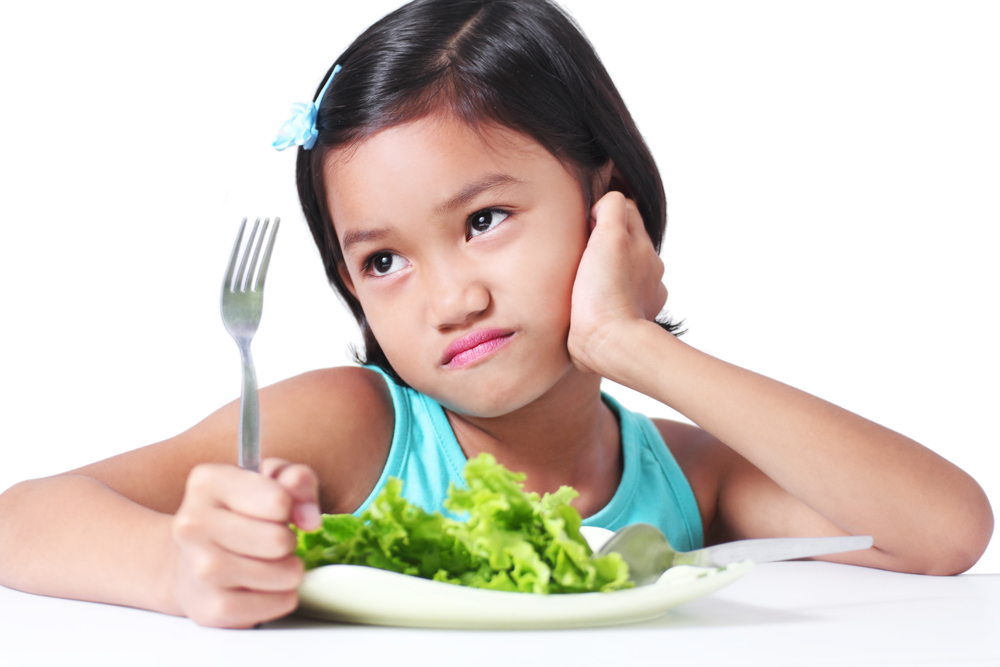Don’t Give Up on Getting Your Kids to Eat Healthy!
Here’s a look at six common mistakes parents make when feeding their children.
1. Sending Children Out of the Kitchen
It is understandable that parents don’t want children close to hot stoves, boiling water and sharp knives. But studies suggest that involving children in meal preparation is an important first step in getting them to try new foods.
2. Pressuring Them to Take a Bite
Demanding that a child eat at least one bite of everything is likely to backfire. Studies show that children react negatively when parents pressure them to eat foods, even if the pressure offers a reward.
3. Keeping “Good Stuff” Out of Reach
Parents worry that children will binge on treats, so they often put them out of sight or on a high shelf. But a large body of research shows that if a parent restricts a food, children just want it more.
4. Dieting in Front of Your Children
Kids are tuned into their parents’ eating preferences and are far more likely to try foods if they see their mother or father eating them. Parents who are trying to lose weight should be aware of how their dieting habits can influence a child’s perceptions about food and healthful eating.
5. Serving Boring Vegetables
Calorie-counting parents often serve plain steamed vegetables, so it’s no wonder children are reluctant to eat them. Nutritionists say parents shouldn’t be afraid to dress up the vegetables.
6. Giving Up Too Soon
Eating preferences often change. Parents should keep preparing a variety of healthful foods and putting them on the table, even if a child refuses to take a bite. In young children, it may take 10 or more attempts over several months to introduce a food.





About two years ago, I posted a survey from the America On The Move Foundation that found 71 percent of children get information about how to be healthy from their mothers, and 43 percent get such information from their fathers.
Case in point, this New York Times article points out that preschoolers will like or reject the same fruits and vegetables that their parents like or dislike. And girls are more likely to be picky eaters if their mothers don’t like vegetables. Parents have also been found to be the strongest influence in how much soda kids drink.
So getting healthy yourself and adopting healthy attitudes about food are two of the best things you can do for your children.
You’re Not Doing Your Children Any Favors By …
Most parents do try to feed their kids relatively healthy, but a lot of factors tend to get in the way. First of all, there’s so much misinformation out there about what’s healthy and what’s not, that adults are often confused about what to eat themselves, let alone what to feed their kids.
There’s also so much junk-food advertising aimed at children that nowadays kids think anything worth eating must be bright blue, sugary, salty or sour, and turn their tongue orange when they eat it. It helps if the “food” is also shaped like some sort of cartoon character or action figure.
On top of that, many parents are truly busy, working long hours and juggling kids on top of it. The thought of preparing a healthy meal at the end of the day is a daunting one for many, so fast-food and heat-and-eat processed foods become the norm in many households.
Before I delve into how to address some of these problems, I first want to mention some common behaviors I’ve seen in parents — things you may think you’re doing right, but which actually could set your kids up for a lifetime of struggles with food. So, you’re not doing your child any favors by:
• Limiting healthy fats. The word “fat-free” or “low-fat” does not belong in a child’s diet (or yours for that matter). Healthy fats like those from animal sources, coconut oil, raw nuts and seeds, olive oil, avocado and others are essential for your child’s development. An excellent way to get some healthy fats into your child’s diet is to add some butter (organic, grass-fed and, ideally raw), raw cheese, or olive oil to lightly steamed veggies.
We all need some fat in our diet, the question is just how much. If you are a protein nutritional type you may need two or even three times as much fat as a carb nutritional type.
• Using food as a reward. This sets up your child to think eating unhealthy foods is necessary for their emotional fulfillment. It’s best to nip this one in the bud early on, or not start it at all.
• Forcing your child to eat everything on his plate. Assuming you’re offering a variety of healthy foods at each meal, there’s no need to make your child eat every last bite. Most kids will naturally stop eating when they’re full, and this is a feeling you want them to learn to honor for the rest of their life. If you start telling them to overeat now, there’s a good chance they’ll overeat later too. (To avoid wasting food, only serve your child small portions, or save what they don’t eat for later.)
• Letting them eat junk instead of a family meal. I’m always shocked at how bad most “kid’s foods” are from a health perspective. If your child only wants “kid foods” like pizza, French fries and macaroni and cheese, do not give in. Kids can eat the same things as adults (cut-up or mashed when necessary) and they will be much healthier for it.
• Giving infants French fries and soda. One study found that infants seven months and older are being given soft drinks in their bottles, and that French fries are the most popular “vegetable” eaten by children aged 19 to 24 months. Please do not fall into the mindset that you’re “depriving” your child by not giving them soda and French fries. You are actually doing them a huge favor.
• Saying you don’t like vegetables. Your kids will hear this and decide they don’t either.
This is just a sampling of what NOT to do with your children, but since I’d rather focus on the positive, here are just as many GOOD things you can do to improve your child’s health.
Healthy Eating: Starting Kids Off on the Right Foot
If you’re currently struggling with getting your child to eat right, or if your child is overweight or obese, I highly recommend you read my book Generation XL, as it goes into great detail about how to raise healthy, nutrition-savvy kids in a junk-food-laden world.
In the meantime, here are some simple ways to encourage your child to adopt healthy lifestyle habits for a lifetime:
1. Make exercise a part of your family’s daily schedule. Take brisk walks as a family, play tag in the backyard, sign up for a martial arts class and simply set aside time each day to get your bodies moving!
2. Get rid of the junk food. If it’s still in your pantry, you’ll be tempted to eat it, and so will your kids. So collect all the soda, candy, cookies, and chips, and give them to a neighbor you don’t like.
3. Set family mealtimes. Studies show that families who eat together have better overall nutrition, and kids with family mealtimes are less likely to smoke, drink, do drugs, get depressed, develop eating disorders and consider suicide, and more likely to do well in school, delay having sex, and eat their vegetables, so the benefits of this one are quite profound.
4. Prepare meals for your family. Staying fit is next to impossible if your diet is mostly fast food or processed foods, so someone in your home will need to devote time to preparing healthy, fresh foods for your family. And while you’re at it, let your kids help, as this makes them more likely to eat the healthy foods you’re preparing.
5. Turn off the TV, computer and video games. Not only is watching TV associated with obesity, but limiting these things will also give your family time to do something active instead.
6. Reward your children with kind words, not food. Many of us were given candy or sweets as rewards from our parents, and you may be tempted to follow that tradition. However, this will only start your children on a long road of addiction to sugar.
7. Overcome your emotional addictions to sugar and junk food. The Emotional Freedom Technique (EFT) is a simple tool to help you overcome food cravings and addictions, and you can teach it to your kids as well.
8. Consider Nutritional Typing for your kids. Nutritional typing is an essential tool to let you know which types of foods are best for your unique biochemistry, and it works for kids of all ages too.